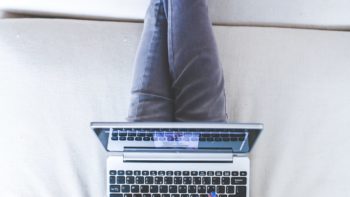The Best and Worst Work Environments 2019

Photo by rawpixel.com from Pexels
Looking for a job can be stressful, especially when you’re fresh out of school. Pitching your capabilities to a potential employer, making a foolproof resume, and bargaining for a reasonable salary present a challenge even to the most academically accomplished graduates. In interviews, you may be asked loaded questions like “where do you see yourself in five years?” or to describe what type of work environment you work best in—both of which are used to evaluate whether or not you fit into the company’s culture.
To an employer, how you answer these questions could make or break your application. But as an aspiring employee, how the workforce is organized can sway your decision to take a respectable job offer. We’ve rounded up five of the best and worst work environments in 2019 to give you an idea of what sort of qualities you should look for to boost your productivity and ultimately help you develop professionally.
The Best Work Environments
A good work environment is characterized by a number of things: strong camaraderie, absence of workplace discrimination, and respect for all workers of different statures. Working in a space which has all these positive traits boost morale and work ethic, as well as cultivate necessary skills to raise one’s career. More specifically, the following kinds of work environments are the best there is in 2019:
Open Office Layout
An open office layout is more than just a space without cubicles and dividers. This type of work environment promotes communication and encourages employees to work as a single unit. It is also called the “no-walls environment” as it rarely makes use of individual offices, which allows employees of varying positions to share a common break room and dining area. With an open office layout, information is exchanged more efficiently through in-person interactions. It also has the added perk of providing a great sense of ease compared to the traditional rigid setup.
Encouraged Skeptic Environment
Workplaces that encourage employees to ask questions and spark healthy discussions are one of the best environments to work in. When workers aren’t afraid to suggest alternative solutions or give feedback even to their bosses, everyone in the company is helping the business move forward with their own ideas. It also breeds analytical employees who can contribute significantly to a business’ growth. Unlike workplaces with an inflexible organizational bureaucracy, a skeptic environment allows employees to exercise logical reasoning and critical thinking.
Balanced Work Environment
A balanced work environment is one that promotes allocating ample time for work and personal matters. It puts more emphasis on “work-life balance” instead of glamorizing the “hustle culture.” Workplaces that follow this kind of model discourage clocking far too long hours, and do not use “passion” to mean sacrificing everything else to further one’s career. Apart from allowing leaves and paying overtime, balanced work environments make it a point to ensure everyone’s workload is manageable within office hours.
Flexible Work Environment
This type of workplace recognizes the individual differences of employees in terms of what they may consider a conducive work environment. As such, a flexible work environment may also be referred to as an individual-focused environment as it offers enough legroom to accommodate different working styles and preferences.
Team-Oriented Work Environment
A team-oriented work environment encourages employees to trust their co-workers to pull their own weight and accomplish tasks that are given to them. Having this sort of environment is vital in fortifying an efficient assembly line within the company, ensuring equal distribution of responsibilities and minimizing burnout. It also develops important interpersonal skills that facilitate smooth collaborations among workers of different personalities.
The Worst Work Environments
Toxic work environments are easily identifiable by virtue of the following characteristics: fear-driven management, discrimination, and poor leadership. Delivering on the demands of a job while dealing with a difficult organization impedes productivity and negatively impacts your health. Identifying poor work environments such as the following is important in avoiding unnecessary stress on the job:
Bureaucratic Work Environment
Most companies strictly adhere to self-imposed standard operating procedures (SOPs). When SOPs are properly tailored to expedite transactions, they help everyone in the company and its clients achieve goals in an ordered manner. However, some businesses strictly enforce certain SOPs despite them being dated or too tedious. Bureaucratic work environments compromise efficiency for the sake of obsolete rules, and are best avoided unless you don’t mind exerting energy on needless work.
Seniority-Driven Office
Loyalty to the company is rewarded by almost all offices. Although it makes sense to treasure high-ranking employees and workers who have been with the company for a long time, it could act as a double-edged sword that renders businesses stagnant and deficient in fresh ideas. When newcomers are reprimanded for challenging bosses with valid points, the workplace turns into a gathering of complacent and frustrated yes-men. Seniority-driven offices do not give their employees opportunities to explore territories outside their comfort zone, and are one of the worst work environments as they forego professional growth.
Overly Competitive Environment
Friendly competitions are a great way to incentivize hard work, but could easily get out of hand and turn toxic. Overly competitive environments pit employees against each other, creating an intense, restless atmosphere that could even involve sabotage. Workplaces which have this type of environment make for a miserable experience where you’d feel the constant need to hustle.
Punitive Work Environment
Punitive work environments are those that only seem to notice mistakes and make an effort to punish them. This kind of setup instills fear, and the notion that you could only either fail or succeed on the job without any room to learn from your lapses. Businesses that practice this sort of system snuff out enthusiasm in the long run.
“Trapped” Office Layout
A “trapped” office layout is characterized by a poorly organized floor plan. More than being unappealing to the eyes, offices that are designed with too many compartments or small cubicles communicate that employees are likely seen as objects to operate a sweatshop rather than genuine assets to the business. Physical barriers also sever the line of communication between coworkers and hinder camaraderie in the workplace.
A job’s benefits and salary should not be the only factors you should weigh in when signing a binding contract of employment. Take note of the best and worst work environments to save yourself from a load of frustration and regret.


